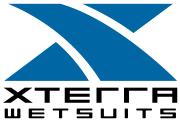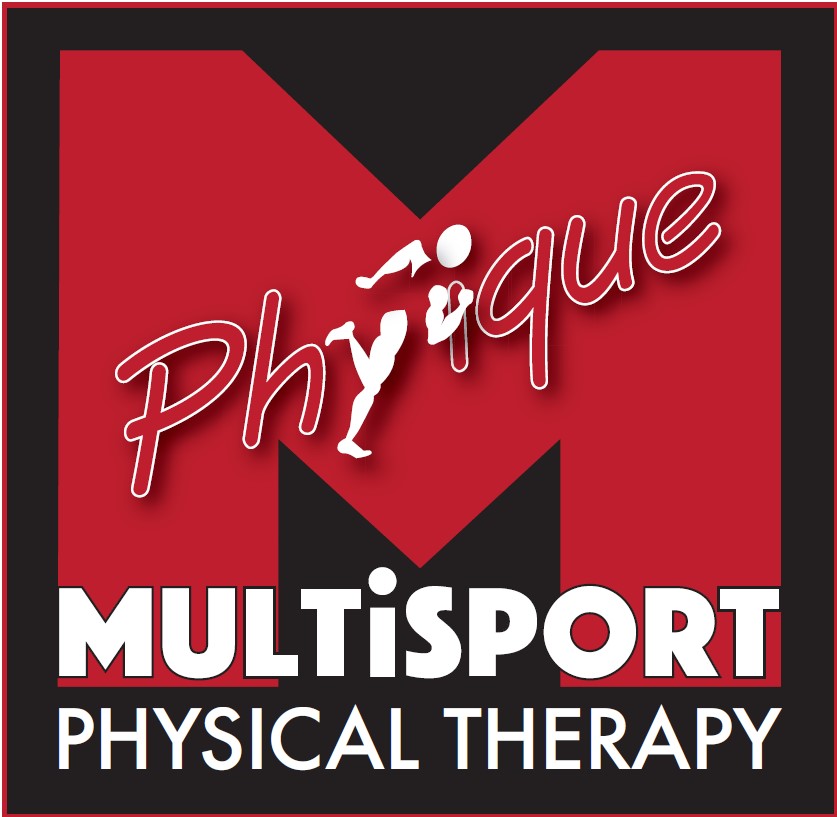Eric Davidson
TCSD Conversation by Craig Zelent
I have wanted to interview Eric Davidson for 2 years now. Eric wanted to wait until he finished Ironman Hawaii. The time has come. On October 10th Eric joined the very select club of triathletes to have finished the most famous race in our sport. Eric’s story was worth the wait.

"Eric Davidson competing in the 2015 Ironman World Championship in Kona"
Craig: What was your athletic background prior to triathlon?
Eric: Growing up on a farm in Iowa, I never considered myself an athlete. As an elementary-school child, I participated in youth leagues for football, baseball and swimming but did not excel at any of them. When I was twelve, we moved to the country where I spent all of my free-time caring for and training our Arabian horses. My high-school activities included band, speech and student government; but no sports. I bought my first bike when I was 25 and enjoyed cycling on the country roads of Virginia where I was living. I maintained decent fitness over the next 15 years with frequent trips to the gym and some cycling but nothing very serious. When I turned 40, I became interested in climbing and spent 1-week in a mountaineering school on Mt. Rainier. That led to successfully climbing Mt. McKinley on a 3-week expedition to Alaska in 2005. After that, I wanted to stay active and turned to running to stay in shape. In 2006, I competed in my first race (San Dieguito Half Marathon) and became hooked on road-racing. Later that year, I ran my first marathon in 3:19 which qualified me to run the Boston Marathon in 2007. I raced two more marathons in 2007 with my best result being at San Diego Rock n Roll in a time of 3:15. While waiting in the gym in Hopkinton prior to Boston, I met two guys who were talking about Ironman racing. That inspired me and I set a new goal: complete an Ironman triathlon.
Craig: Most people chose a local sprint for their first triathlon. What was your first triathlon like?
Eric: I am somewhat unique in that my first triathlon was an Ironman. Prior to getting involved in the sport, triathlon meant only one thing to me: Ironman. Because I was now a “marathon runner”, it seemed logical to me to register for an Ironman - why would I start with a race that didn’t include that distance? As I was a complete novice in triathlon, I had much work to do to prepare for Ironman Arizona scheduled for April 2008. I joined TCSD, bought a tri-bike, read books and sought advice from as many people as I could. For my first race, I did not hire a coach but relied on advice I gleaned from others including you, Craig, and from my spin instructor Bernie Sidney.
I entered that first Ironman with much anxiety - and high hopes for a good result. I made some classic mistakes race week, notably swimming in Tempe Town Lake in the days prior to the race and ending up with gastroenteritis the day before the race. I was still throwing up on race morning but didn’t consider sitting it out. This was pre-Facebook but I had still let over 100 family, friends and colleagues know via email what I was doing and I didn’t want to let them (or me) down. This was the last time IM Arizona was held in April and the conditions that day with temps in the 90’s clearly supported the decision to move the race to November. Nonetheless, I finished that race in 13:16 and was happy to be an Ironman!
Craig: Your triathlon career consists of 20 races and 16 of those are full Ironman distance events. What races stand out as the most meaningful to you?
Eric: That’s correct, Craig. Other than a few Sprint and Olympic triathlons in 2008-2009, all of my racing has been at the full-distance Ironman-branded events. I decided to spend my race fees on Ironman races as I was intent on qualifying for Kona via the Legacy program.
My favorite race course is Arizona, a race I’ve completed 9 times. After that first race in April 2008, I trained with Breakaway Training for 6 months and diligently followed the customized training plans that Luke Walton and Felipe Loureiro put together for me. Although I have been self-coached since 2008, I still consult and follow the Periodization programs they designed for me. Their insights and coaching changed me as a triathlete and allowed me to shave 2 ½ hours off my time when I raced IM Arizona again in November of 2008; the 10:48 still stands as my best race to date. I competed again at IMAZ in November 2015 and still consider it the best place for me to race with the flat terrain and typically fast conditions, although we were surprised with the cold and rain conditions this November.
I also love Ironman Wisconsin – the fan support in Madison is tremendous and the course is spectacular. My parents were able to stay with me and watch the race in September 2008; the only time they were able to see me race an Ironman. Having family on the course to cheer you on is incredible and having my parents there was extremely special. I’ll never forget stopping to give my mom a kiss at the top of the helix coming into T2. My parents both passed away in 2013 - I remember them at the beginning of every race and think about how much their support meant to me. If you still have your parents and they haven’t seen you race, I strongly recommend you do whatever you can to make that happen. A mantra my mother loved to say as she attempted to keep active during her cancer therapy was “Someday I might not be able to do this. Today is not that day”. I think about that every time I have the opportunity to race an Ironman.
The inaugural Ironman Lake Tahoe of 2013 will always hold a special place in my heart. It was my slowest time (14:54) and the most difficult by far with the cold, altitude and long grades on the bike course. I remember knocking the icicles off my bike in T1 and dealing with the cold temperatures on the run as the day turned into night. The only thing that saved me was relying on my mountaineering training to try to keep warm. I went back through Special Needs at Mile 10 to pick-up clothing that earlier racers had abandoned which allowed me to finish the race in the cold conditions.
Craig: What is the Ironman Legacy Program?
Eric: The Ironman Legacy Program was launched in 2010 to give loyal Ironman racers the opportunity to race at the World Championship in Kona. I was thrilled because I wasn’t fast enough to qualify for Kona by finishing in one of the top spots in my age-group; or lucky enough to gain a spot via the lottery. At that point I had completed 6 Ironman races with the goal of being a 10x-Ironman. With Legacy I had a new goal of 12 Ironman finishes as that was the number required to get to Kona.
The criteria to be selected as a Legacy athlete for 2016 are: 1) Athlete must have completed a minimum of 12 full-distance IRONMAN-branded races by December 31, 2015; 2) Athlete has never participated in the IRONMAN World Championship; 3) Athlete must have completed at least one full-distance IRONMAN event in 2014 and 2015 and 4) Athlete must be registered for a full-distance IRONMAN event in 2016. According to Ironman “Due to the overwhelming popularity of the program, we expect there to be significantly more qualified applicants than there are slots available (100). In the past, qualified Legacy applicants who were not selected in their application year were guaranteed selection in the next year’s program if they maintained eligibility. Due to the amount of qualified applicants we currently have, we can longer make that guarantee and athletes who are not selected will be placed on a wait-list. An athlete’s place on the wait list will be based solely on their Legacy application time-date stamp.” For me, I entered Legacy after completing my 12th race in 2013 but was not selected until my 2nd year. So after 14 Ironman races in 7 years, I finally “earned” my spot to race at the World Championships this past October.
Craig: What was your Ironman Hawaii experience like?
Eric: If you’re a fan of Ironman you need to try to get to Kona to experience the World Championship as an athlete. One piece of advice I received was to allow plenty of time and to get to events early. I was in the first group that completed registration on Wednesday morning and it was incredibly cool to have the volunteers greet us with applause as our group came through the doors – now I’m feeling like an athlete! I attended the Parade of Nations later that day and happened to be the first person to show up at the recommended time. I asked if I could help and the volunteer said, “Do you want to carry the American flag for the US delegation?” It was so much fun to march through Kona with some of the Americans and see the delegations from other countries. A highlight for me was attending the Legacy reception that Ironman holds for the 100 Legacy athletes. Ironman legends Paula Newby-Fraser, Craig Alexander, Dave Scott and Mark Allen were there to congratulate us at a beautiful event at the King K hotel.
I was very fit for this race but was humbled by the conditions on race day. Temperatures were in the 90’s and the winds picked-up later in the day on the bike course. The rain and wind in Hawi made the roads slick and I felt like I was hanging on for dear life at times. My time of 13:43 was one of my slower Ironman times - to give you an idea of how difficult it was for me I raced IMAZ 5 weeks later in 11:28 on a day that included cold and rainy weather and a flat tire. I have tremendous respect for the Kona course and am happy that I was able to complete it on that day.
Craig: What is your involvement with the USA Triathlon Southwest Region Council?
Eric: I was appointed to serve on the USAT – Southwest Region Council in 2012 and re-elected to a 4-year term in 2014. I serve as one of the Executive Officers on the Council and chair the Outreach Committee with the goal to retain and recruit new members to USAT. We hold 12 membership rallies per year at triathlons throughout our region (California, Arizona and Nevada) including special events at the Regional Championship races. The experience serving on the Council has been very worthwhile as I interact with a talented and committed group of council members, USAT National staff, and USAT Board members.
Craig: I’ve been really pleased over the recent years to see more USAT sanctioned races in the San Diego area. Why would someone want to become an annual member of USAT?
Eric: An annual membership allows an athlete to compete in USAT-sanctioned races while receiving benefits including: a subscription to the quarterly USA Triathlon magazine, inclusion in the USA Triathlon national ranking system, discounts from USA Triathlon sponsors, and eligibility to qualify for Team USA and compete in world championship events. Without this membership, a one-day $15 membership is required to compete in any USAT-sanctioned race. The $50 annual fee makes sense based on three races/year; plus purchasing the annual membership avoids the hassle of buying a 1-day license for every race. The discounts are valuable too- I travel extensively for work and pleasure and the 15% discount at Hilton properties pays for the annual membership in a few stays.
In addition, I like the idea of supporting the National Governing Body for our sport. The Membership fees are put to good use for the development and upkeep of USAT age-group programs such as championships, event sanctioning, officiating and rankings. While some funds are allotted to the training and development of elite athletes, most of that funding is through sponsorships and U.S. Olympic Committee support.
Craig: What are your favorite benefits of membership in the TCSD?
Eric: I joined TCSD in the fall of 2007 and vividly recall attending my first meeting at Road Runner Sports. Craig, you held a meeting for aspiring Ironman athletes and shared with us your Ironman training plans. The monthly meetings continue to be my favorite benefit of my membership in TCSD. I enjoy the people, the delicious food and the raffles. I’ve learned so much from Bob Babbitt’s interviews with professional triathletes – some of my favorites have been his chats with Chrissie Wellington, Samantha McGlone, Miranda Carfrae, Andy Potts, Ben Hoffman and Luke McKenzie. I am an avid fan of triathlon and attribute getting to know the athletes on a personal level as one of the reasons for that.
Craig: I’ve seen you serving as a race official at many events. What does it take to become a race official and what do you enjoy about this responsibility?
Eric: After a few years in the sport, I was looking for more ways to get involved and became aware of the USAT Officials programs. I attended a clinic in 2011 and became certified as a USAT official- working races mainly in Southern California. Interestingly, when I first started most of the races in San Diego were not USAT-sanctioned or the race director self-officiated. I know we all get frustrated when other triathletes don’t follow the rules (no drafting!) and I’m very happy to see that more local race directors are now using certified officials to create a fair field of play. In 2012 I became certified as an ITU Technical Official. The ITU organization oversees the rules and insures consistency at races around the world including Continental races, the World Triathlon Series and the Olympics. I recently achieved the second level of certification with ITU and would like to officiate at events outside the USA in the coming years. I also work at Ironman events - riding on the back of a motorcycle serving as a bike marshal. Between the 3 organizations, I officiate at approximately 12 events per year. The organizations pay a stipend and travel expenses- you don’t make much money but I’ve found it to be extremely rewarding, an excellent way to get more involved in our sport and a wonderful way to meet new friends from across the USA and the world! If you’re interested in getting involved, you can find out more information on the USAT website.
Craig: What are some of the funniest things you have seen over the years in triathlon?
Eric: The funniest thing I’ve seen on the race course was at Ironman Lake Tahoe where a competitor was still wearing his wetsuit on the bike course in order to stay warm. He was carrying his Ironman backpack and intended to change into his biking kit once it warmed up. I never heard whether he made the cut-offs and finished the race. I also get great enjoyment and pleasure in seeing the first-time racers at Ironman events. Typically this is about a third of the racers so there are many opportunities to see the OCD behavior that many of us exhibited at our first events.
Craig: What are your favorite aspects of the triathlon lifestyle?
Eric: I enjoy the discipline that triathlon brings to all aspects of my life. I find myself to be more organized when I’m in the middle of Ironman training and I achieve more. I work in outside sales for a medical device company and find that I am more productive at work when I plan most of my waking hours. My children are both now in college so I have more free time to train but that wasn’t the case when they were younger. I remember getting in a 20-mile training run and still making it to the soccer field to coach my daughter’s team at a 10:00 AM game on a Saturday morning. Those were wonderful times but it’s much easier now to fit in the training when my wife and I are empty-nesters.
Craig: What are your future triathlon goals?
Eric: I’m not sure – I haven’t signed-up for any races for 2016. It was a big decision not to register for IMAZ 2016 as it would have been my 10th time on that course. I would love to race some of the iconic endurance events in Europe such as Norseman, Challenge Roth, or L'Alpe d'Huez. I entered the Norseman lottery for 2016 but was not selected. I will continue to officiate at USAT, ITU and Ironman events as well as serve on the USAT- Southwest Regional Council to advance the sport of triathlon in the USA. I also plan to get more involved in TCSD - attending workouts, checking out our club races and getting to know other members of the best TriClub in the country!
Craig: Eric, thank you for sharing your story. You are the ultimate Ironman. I bet there is no one else on the planet who can say that 80% of their triathlon race finishes have been the Ironman distance. It’s just a matter of time before you identify a triathlon goal. Good luck and enjoy the journey!
Craig Zelent is a USA Triathlon Level 1 Certified Coach. Craig can be reached at 760-214-0055 or tricraigz@yahoo.com.








